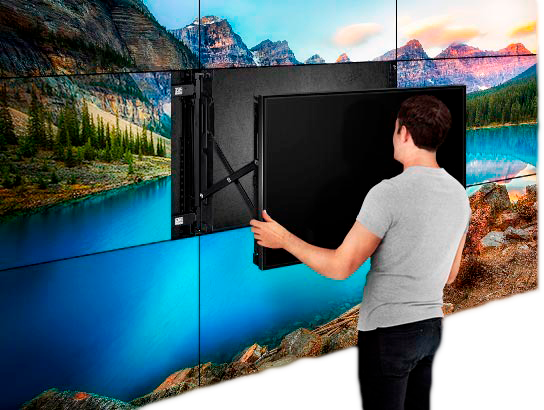LED wall panels have secured traction for their capacity to deliver crisp visuals in various settings, from professional environments to entertainment venues. One of the most significant aspects of these systems is their connectivity options, which allow users to connect them to different devices and systems. Understanding the broad input options available for LED wall panels is essential for enhancing their use and effectiveness. This discussion details these options, highlighting how they can cater to various needs and preferences.

One common interface method for LED wall panels is High-Definition Multimedia Interface. HDMI is widely known for delivering crisp video and audio signals between devices. This interface type is especially useful in commercial environments, such as meeting spaces or classrooms, where visual content or video content are often displayed. By using digital connectors, users can seamlessly connect laptops, projectors, and streaming devices to LED wall panels, guaranteeing a sharp and dynamic display of information.
Another commonly used interface method is DisplayPort, which is similar to High-Definition Multimedia Interface but offers enhanced benefits. DisplayPort can support higher refresh rates and display outputs, making it an ideal choice for gaming or graphic-intensive applications. For those using Light Emitting Diode wall panels in settings where output quality is critical, such as esports arenas or creative workspaces, Display Port can provide the required visual clarity. Additionally, many modern computers and graphics cards feature DisplayPort connections, making it a practical solution for technology-oriented professionals.
In addition to HDMI and DisplayPort, cordless transmission options are becoming increasingly prevalent in LED wall panel solutions. Cable-free interfaces allow operators to transmit content without the need for physical cables, promoting a cleaner and more adaptable setup. Technologies such as wireless internet and short-range communication allow users to link smartphones, tablets, and laptops directly to LED wall panels without cumbersome wires. This convenience is especially beneficial in fast-paced settings like trade shows or live functions, where rapid adjustments to displays are often required.
For larger installations or go right here more complex setups, network connectivity through Ethernet is another viable solution. Wired connections provide a stable and reliable way to connect multiple LED wall panels within a system. This approach is suitable for electronic display use cases found in retail centers or transport hubs, where numerous panels may need to display synchronized content across a wide area. By using Ethernet cables and routing hardware, operators can guarantee that all linked panels receive uniform data and content efficiently.
Finally, it's crucial to evaluate the evolution of interface technology with advancements such as Universal Serial Bus-C and Thunderbolt Three. These next-generation interfaces offer enhanced data transfer rates and flexibility by allowing one cable to handle both power delivery and data transmission. As more devices adopt these standards, LED wall panels equipped with USB-C ports will likely become more common. This evolution in connectivity not only enhances the capabilities of LED wall panels but also coincides why not try this out with the emerging trend of minimalistic design in hardware arrangements by minimizing the number of wires required.
In summary, exploring the diverse connectivity options available for LED wall panels uncovers many opportunities for operators across multiple industries. From conventional methods like HDMI and DisplayPort to modern wireless technologies and LAN setups, each pathway serves specific functions tailored to specific needs. Additionally, emerging technologies like Universal Serial Bus-C offer further developments in how professionals interact with LED wall panels. By understanding these connectivity choices, individuals can make strategic selections that optimize their overall engagement with these versatile display tools.
Comments on “Examining the Wide-ranging Connectivity Options Offered for LED Display Modules”